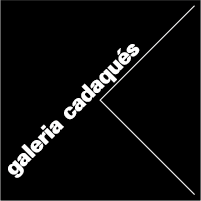Anna Ferrer portrays the restlessness of big cities, trying to make their absences and silences visible, confronting us with images of avenues, shopping malls, parking lots, airports, business buildings, places of impermanence and anonymity, of aseptic and regular experiences, of generic pleasures and standardized tedium, of this deaf melancholy that flees along the highways and hides in supermarkets.
His first photos, grouped under a series, showed isolated and static figures immersed in urban landscapes, inert characters in the midst of enormous architecture, overwhelmed by the imposing and rigid structures. They were postcards sent from the broken and dispersed geography of anomy and stress that already shaped his later production and carried a title that could define and encompass all his work to this day: the emotional city.
Very open shots, with a great depth of field and with a careful composition: these are the constant characteristics of his work; stylistic marks that do not draw attention to themselves but rather, as if receding to one side, give the viewer the freedom to look, at their own pace and in their own way, at these motionless figures, caught between lines of flight.
Sick transit, The series shown in this exhibition, although totally independent, much more delimited and much less controlled, continues and completes the thematic and formal investigations of that initial series; the current one, started in 2001 and finished in 2004, is a systematic record of the scenarios of various traffic accidents that occurred in the metropolitan area of Barcelona moments after the event.
We are here in the presence of that which is irreversible, on these plaques the waiting instant of the fait accompli extends, the spots on the road mark the final and suspensive points -at the same time- of these interrupted trajectories. Impersonal tragedies, too public to allow mourning and too sudden to cherish mourning, which can only arouse in the casual observer the sketch of an emotion that never takes shape.
In environments designed not exactly to be, but to circulate, the true calamity is not to die in them, but to stop. The only possible reaction is operational, technical, hygienic, the efficient response of the institutional device: pre-established professional procedures re-establish traffic and restore normality, a swarm of uniformed officers watches over the return to order and controls the traumatizing flow of people and vehicles; in front of the destruction there is no lamentation, only cleaning.
The camera, impassive witness to chance or fate, is kept, literally and metaphorically, at a distance; there is no corpse or blood, no victim is shown to us, only the agitation that arose around a body intuited but absent; even the accident itself is a blind spot, a discontinuity, a centrifugal anomaly; and we do not look for this lost body either, because in any case, even if we found it, it could not return our gaze.
The presence of death, impregnating everything with an inevitable fright, and its proximity to everyday areas, makes this “picture” that we are seeing, in the manner of a vanitas or a Tottentanz, but in contemporary contexts, it follows a reminder of the fragility of life and the transience of everything mundane; a healthy dose of perspective, but soberly, escaping tremendousness and pathos.
The intrinsic drama in the scene contrasts with the formal care taken in the image, creating a disturbing tension between theme and style; which thing, added to the discrepancy between the treatment that this type of event usually receives and the peculiar elaboration that exists in this case, questions the prefabricated perspectives that we have as spectators, conditioned by the common site of the gimmicky close-up.
Here, in technical neatness it works as a statement of principles. Meticulousness, rigor and method, with the implicit slowness, become a form of symbolic resistance against excessive speed: the opportunistic speed of the press snapshot, the speed of sensation that fails to transform into perception. , the speed of the media that turns the past into amnesia and the present into anesthesia.
Unlike journalistic photography, which is generally the product of occasion rather than intention, which seeks impact and comment, and which witnesses isolated events, documentary photography deals with situations, phenomena and circumstances, articulating their images with each other, relating them to other cultural, historical and social referents, thus giving witness to a certain state of affairs.
Anna Ferrer’s photographs testify to a malaise, they are not here simply as such, but rather as symptoms; in their accidents they are the byproduct of an anxiety that is measured in kilometers per hour. His images somehow accompany the percentages of misfortune, the pitfalls and subtractions of the living and the dead, the probabilities of disagreements, the necessarily and never calculated statistics of loneliness.
Andrés Rojas


